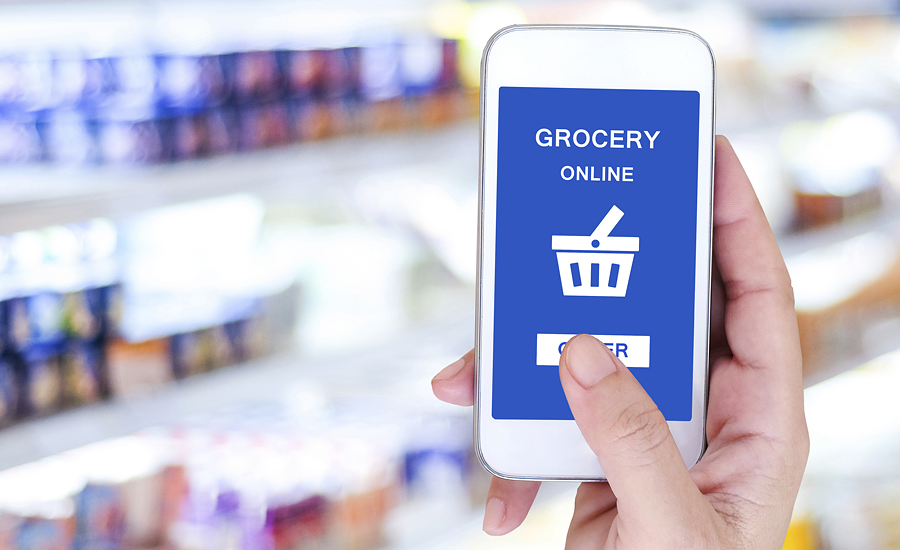While more and more Americans are shopping online in lieu of going to stores, this trend has not yet hit the retail grocery industry in a significant way. In fact, 9% of U.S. adults report their household orders groceries online for pickup or delivery at least once a month, including 4% who do it at least weekly, according to an annual consumption habits survey conducted by Gallup, Washington, D.C. By contrast, almost all Americans say someone in their family shops for groceries in person at least once a month, with 83% going at least once a week.
The survey, which was conducted July 5-9, reveals that highly frequent grocery shopping is occurring mostly in person, highlighting the potential for growth in the online grocery business.
At this point, online grocery shopping appears to be an adjunct to retail shopping rather than a replacement, as most shoppers whose families purchase groceries online once or twice a month or more say they still visit a store to buy groceries at least once a week.
View survey methodology, complete question responses and trends.
Americans under 65 most likely to use online grocers
Fifteen percent of U.S. adults aged 18-29 say they purchase groceries online at least monthly, similar to the 12% among those 30-49 and 10% of those 50-64. These figures all contrast sharply with the negligible 2% of those aged 65 and older who shop for groceries online at least once a month. At the same time, age has little relationship to shopping in person at grocery stores, which is nearly universal across all age groups.
Americans living in the eastern United States and those residing in cities are more likely than their counterparts to use online grocery shopping technology. Working adults, perhaps because they have less time to shop, are almost twice as likely as those who aren't working to do their grocery shopping online. Income is not related to online shopping for groceries.
Gallup also asked Americans about their weekly food spending in 2012. At that time, the median expenditure per U.S. household on food was $125 a week. Since then, Americans' weekly spending on food has remained stable, with a median of $130 in 2017.
The Department of Agriculture reports food costs rose about 6% between 2012 and 2016. Gallup's estimates are for family expenditures and could have remained stable because of a decline in the number of people in each family unit in the country.
Government reports show that Americans are now spending as much at restaurants as they are at grocery stores. It is possible that survey respondents are not counting increasing restaurant expenditures when asked to estimate their weekly food costs, helping explain why food spending has not increased.
Those who shop more than once a week in person at the store spend more on average than others, however there is no relationship between shopping online and amount of money spent.
Bottom line
Shopping for groceries online has a long way to go before it catches on with the vast majority of consumers, who mostly do their grocery shopping in person.
However, this may change, with experts asserting the traditional grocery business may be in a situation similar to that of department stores in recent years, with more retail space than the market can sustain. Traditional grocery stores may find their market share continuing to erode because of changing shopping patterns, particularly online shopping, and may be forced to maintain viability by cutting costs and reducing service.
There are a number of potential changes in addition to the looming presence of online grocery shopping that could affect the grocery industry going forward. In addition to spending more at restaurants, industry reports indicate that Americans are also more likely to purchase food at convenience and other locations rather than traditional grocery stores.
The retail grocery industry is gearing up for a period of rapid change, and major retail grocers have already begun shifting to online ordering for pickup or delivery, as well as in-store dining and on-site food preparation, to position themselves to be on top of, rather than reacting to, pending shifts in consumer behavior.
Results for this Gallup poll are based on telephone interviews conducted July 5-9, with a random sample of 1,021 adults, aged 18 and older, living in all 50 U.S. states and the District of Columbia. For results based on the total sample of national adults, the margin of sampling error is ±4 percentage points at the 95% confidence level.



